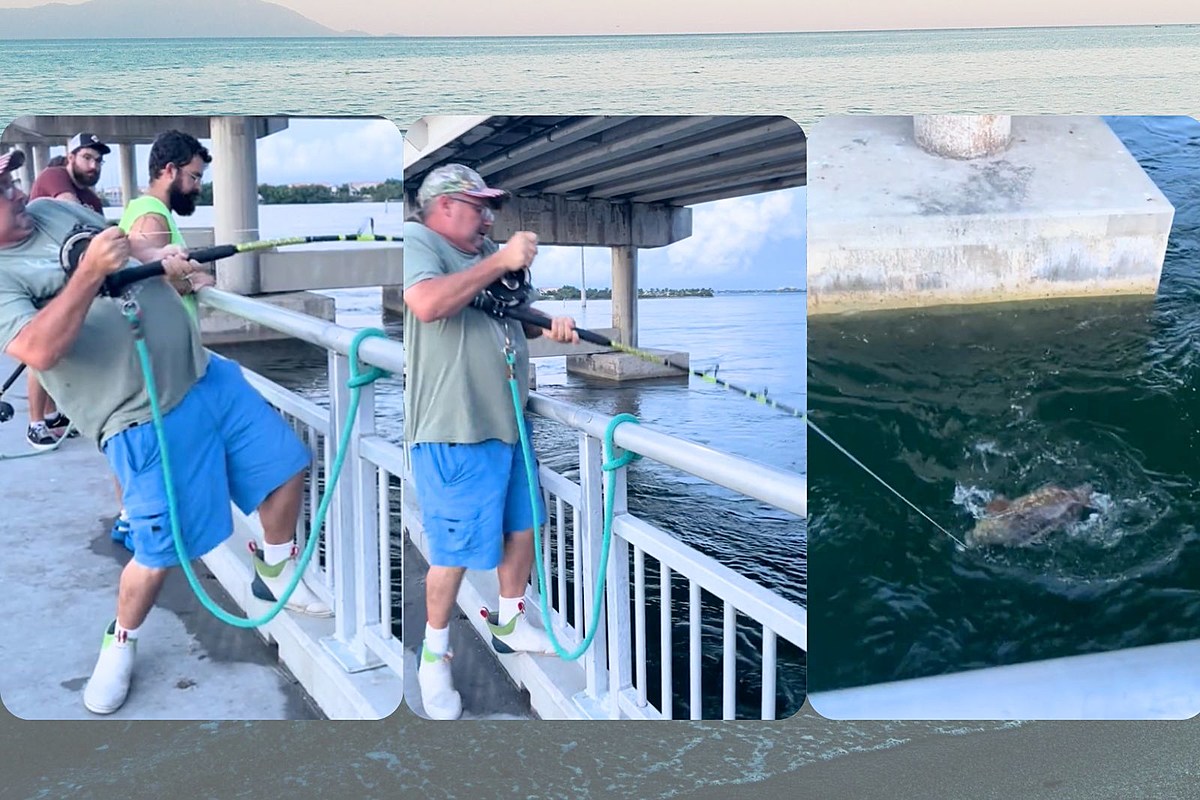You are going to want to take a breather after watching this.
A Florida TikToker is sharing her family’s adventures as they struggle to hold on reeling in gargantuan fish.
How Did The TikTok Account Become So Popular?
Rachael Reich has nearly 270,000 followers and more than 13 million likes from people who can’t get enough of her family battling sea monsters.
In many of the videos, Rachael and her family have to tie a rope to a nearby rail just to keep their feet on the ground while reeling in the massive creatures.
Her most recent video chronicles Mike Reich’s intense battle with a fish that looks like it is the size of a small motorcycle.
The post, which already has more than 154 million views, shows Mike jockeying for position on a bridge in Fort Pierce, Florida as the fish nearly pulls him over.
The reveal of the fish at the conclusion of the video will suck you down the Florida fishtok rabbit hole.
What Type Of Giant Fish Are They Reeling In?
Those who watched the video can’t stop commenting on the amount of patience and physical strength required to reel in the fish, which appears to be a Goliath grouper.
According to the National Oceanic and Atmospheric Administration, Goliath grouper can weigh as much as 800 lbs. They are typically found in shallow tropical waters.
Another video on Rachael Reich’s TikTok, which has 3 million views alone, shows an entire crew working together to bring in a whopper of a fish in the middle of the night.
Other videos on the account show the family bringing in a variety of sea creatures including one notable battle with a shark.
When Rachel isn’t behind the camera, she is hooking her own Goliath grouper out of the water, which she proudly shows off on TikTok.
LOOK: 20 of the biggest insects in the world
LOOK: Stunning animal photos from around the world
From grazing Tibetan antelope to migrating monarch butterflies, these 50 photos of wildlife around the world capture the staggering grace of the animal kingdom. The forthcoming gallery runs sequentially from air to land to water, and focuses on birds, land mammals, aquatic life, and insects as they work in pairs or groups, or sometimes all on their own.


